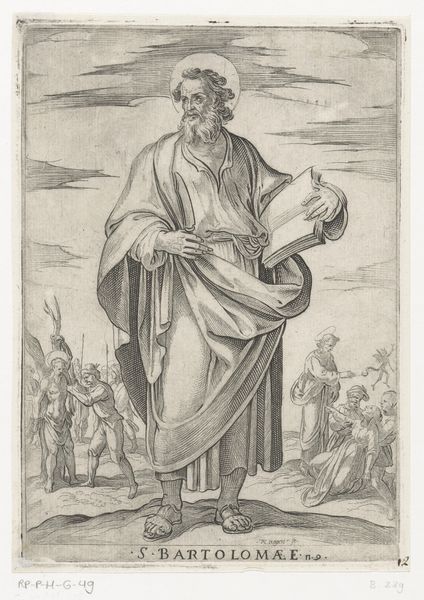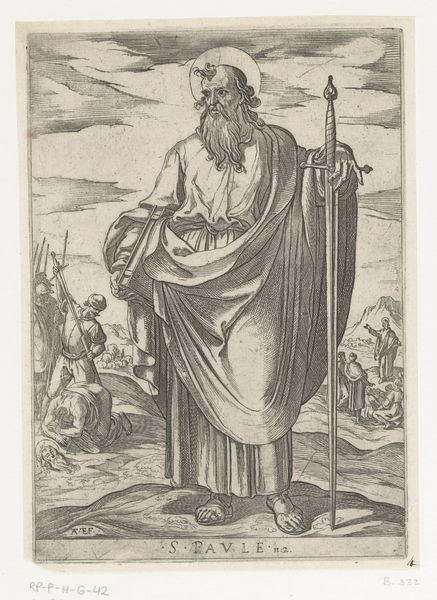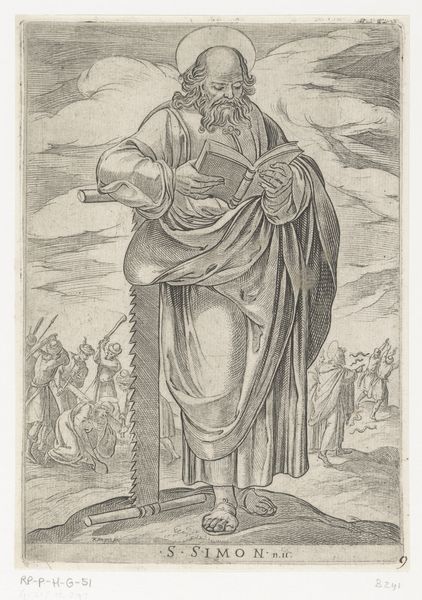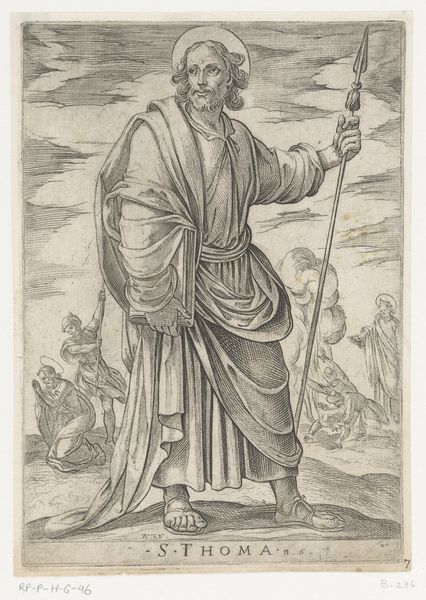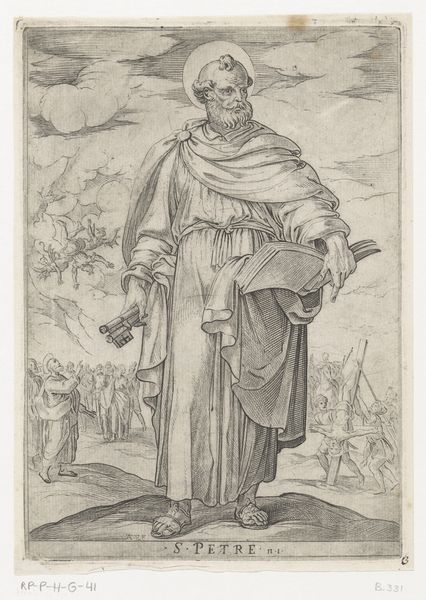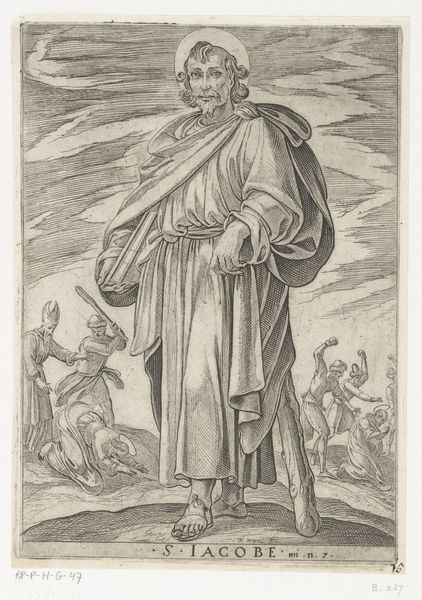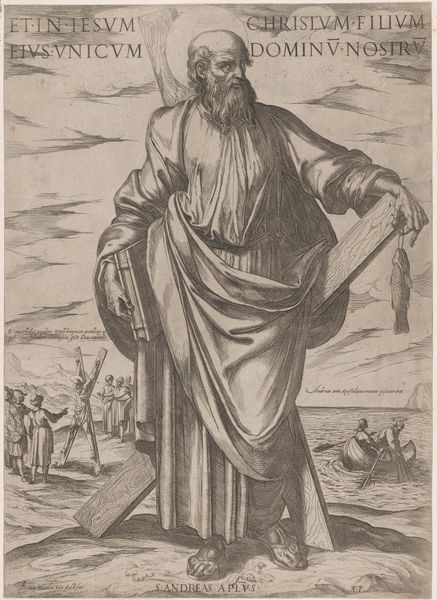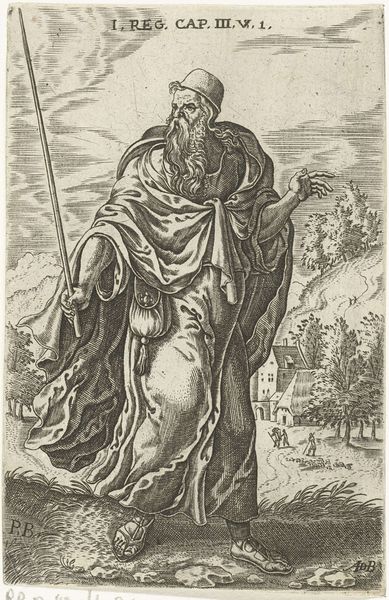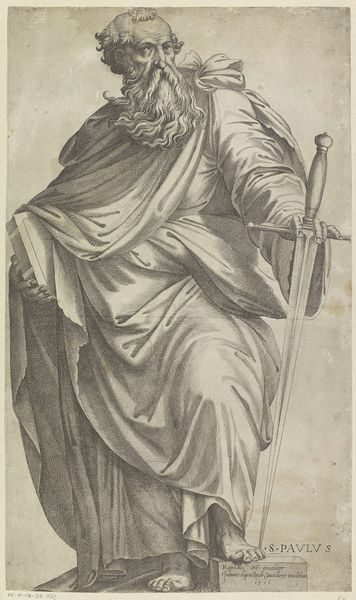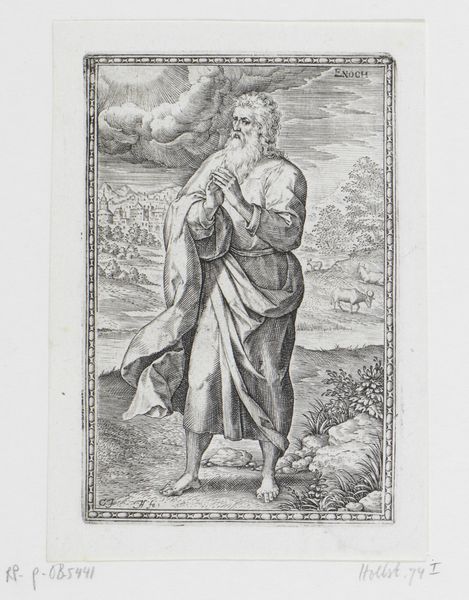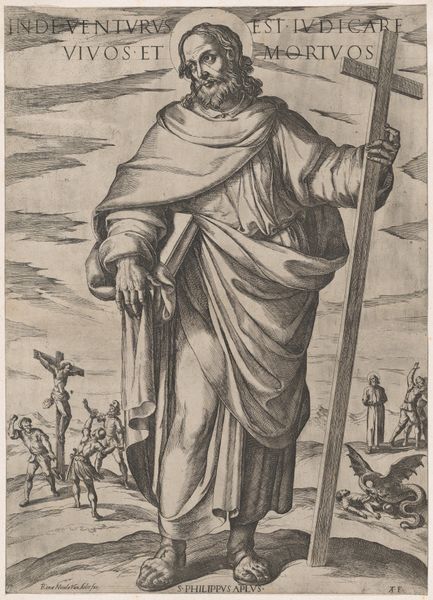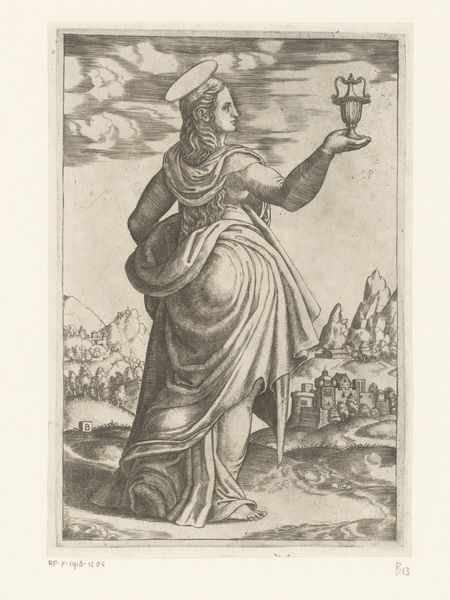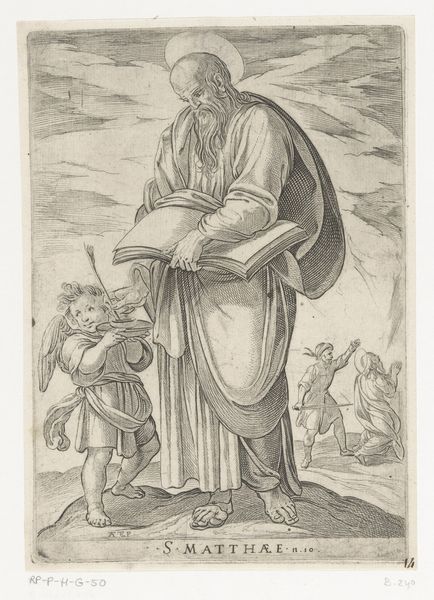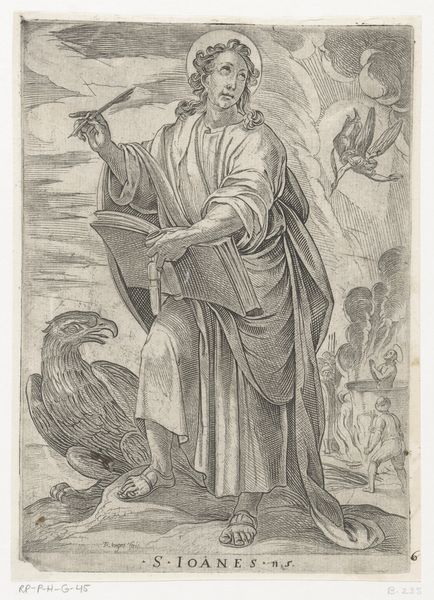
print, engraving
#
baroque
# print
#
figuration
#
history-painting
#
engraving
Dimensions: height 202 mm, width 143 mm
Copyright: Rijks Museum: Open Domain
Curator: This engraving from the Rijksmuseum depicts "The Holy Matthias" by Antonio Tempesta, created sometime between 1565 and 1630. My first thought? There’s something strikingly somber about it, even with the implied ascension through the clouds. The meticulous detail, given that it’s an engraving, is quite striking. Editor: There's an interesting tension between the seemingly divine figure in the foreground and the vignettes in the background. Note the tools of execution depicted in the hand of a torturer on the left; it is difficult not to contextualize that torture and think of this figure through a framework of violence, gender, and other structures of authority and power. Curator: Indeed. Contextualizing Matthias as a replacement apostle selected after Judas' betrayal requires understanding the sociopolitical climate of early Christianity. It begs the question: who gets to choose? What were the selection dynamics like and how do those selections impact who is empowered? The power to replace an Apostle resonates through historical and current power imbalances within and without religious institutions. Editor: Exactly! And considering Tempesta's process as an engraver, that meticulous line work we mentioned becomes really intriguing. Engraving, especially during this period, was not only a reproductive technique but also a means of dissemination. Think about the accessibility a print like this would have offered compared to a painted altarpiece, and then examine how different engravers working with different implements would interpret this story based on materiality of the plate and inks, for example. Curator: And within that framework, one has to consider who would be buying, owning and propagating prints, especially a print featuring the story of Saint Matthias and reflect how he stands against dominant forces or systems of oppression? It seems a deliberate positioning to appeal to a population that saw some degree of their life story echoed in that narrative. The act of disseminating these prints was itself a radical act for the time. Editor: That's a crucial connection! We often separate 'high art' and popular visual culture, but here, we see them intertwined. Considering Tempesta's labor, the copper plate he worked on, the printing press—it all connects to a larger network of production and distribution. The consumption of religious icons like this shaped cultural beliefs just as surely as political or economic systems. Curator: It adds depth, certainly. To understand not only the symbolic representation, but how that imagery interacted with identity, gender and the lived experiences of real individuals back then, in order to see not just artistic skill, but an assertion, a resistance, and maybe, just maybe, a promise of a brighter tomorrow. Editor: And to remember the very material nature of such an ethereal goal, shaped through deliberate action. Food for thought.
Comments
No comments
Be the first to comment and join the conversation on the ultimate creative platform.
